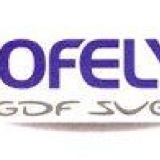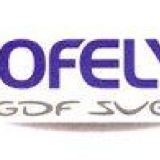Title Page
-
Site conducted
-
Conducted on
-
Prepared by
-
Location
Section 1.0: Bulk's Ten Golden Rules
-
Fall protection is required whenever working above 4 feet.
-
Rail priority rules, track clearances and crossing rules must be followed.
-
Safety devices must not be intentionally disabled or bypassed.
-
Entry into a permit required confined space is not allowed.
-
Maintaining clearance under suspended loads and objects.
-
Slings in use must be properly rated, inspected and rigged.
-
While actively inflating tires, all employees must stay clear of the tire's trajectory zone.
-
All traffic and vehicle rules must be followed.
-
All work must comply with Bulk Equipment's Lockout/Tagout policy.
-
Site is in compliance with Bulk Equipment's Jacking and Blocking policy.
Section 2.0: Administrative
-
Are Near Misses being documented?
-
Are required postings (Worker's Compensation Information, Labor Laws, Employee Rights, etc.) prominently displayed?
Section 3.0: General
-
Are Safe Work Practices/Standard Operating Procedures/JHA’s being followed?
-
Are man doors being used and overhead door avoided for pedestrian traffic?
-
Is PPE being used as required and properly maintained?
-
Is all PPE clean and stored in its respective locations (i.e., fall arrest gear, welding gear)?
-
Are areas generally clean and free of housekeeping hazards (i.e., tripping hazards)?
-
Have oil spills on the shop floor and property been properly cleaned up to avoid slips and maintain environmental compliance?
-
Are all doorways clear of obstructions?
-
Is the area well lit?
-
Are fumes, vapors and/or exhaust controlled or vented from the building?
-
Do portable tools, bench grinders, tooling and equipment have all their guards in place?
-
Are tool rests (1/8”) and tongues (1/4”) set at proper distances on bench/pedestal grinders?
-
Is there a First Aid Kit available? Is it clearly marked and fully stocked? Are monthly inspections done?
-
Are portable ladders inspected and maintained in good working order?
-
Is storage shelving secured to floor or wall and capacity noted?
-
Is the overhead crane inspected and certified on an annual basis?
-
Is a crane log maintained?
-
Electrical cabinets closed?
-
Are all electrical outlets and cords in safe condition (free of cuts, splices or exposed wires)?
-
Are outlets GFCI rated or is a GFCI rated adapter used?
-
Extension cords not used as permanent wiring?
-
Are parking spots and walkways appropriately lighted?
-
Is snow, ice and other debris controlled on all walking/driving paths?
Section 4.0: Fire Safety
-
Are all fire extinguisher stations properly marked, free of obstructions and mounted off the floor?
-
Have all fire extinguishers been checked on a monthly basis to ensure they are fully charged and in good working order?
-
Have all building/storage area fire extinguishers been inspected by an outside agency on an annual basis?
-
Are area emergency lights in place and functioning?
-
Are smoke, fire and burglar alarms in place and functional?
-
Have NO SMOKING signs been posted in the chemical/flammable material storage areas?
-
Has an (ERP) Emergency Response Plan been developed? Is the plan up to date and posted at key locations in the building (i.e., near all exits and phones)?
-
Are Assembly Points known and identified?
-
Are emergency exits well identified and unobstructed?
-
Are emergency evac alarms or air horns onsite and accessible?
-
Are oily or contaminated rags stored in approved receptacles for approved disposal?
Section 5.0: Compressed Gases & Hot Work
-
Are flashback arrestors and back-flow prevention devices installed on all oxy-acetylene torches?
-
Are oxy-acetylene cylinders turned off and the system depressurized when not in use?
-
Are flammable liquids and combustible items stored away from welding equipment?
-
Are gas cylinders secured upright? Are oxygen and flammable gas cylinders stored separately?
-
Are cylinder caps on cylinders when not in use?
Section 6.0: Chemical Safety
-
Is there a current chemical inventory for the site? Is 3E online management available and do employees know how to use/access it?
-
Are secondary containers properly labeled?
-
Are chemicals being stored in their appropriate locations? (ie Flammable Storage Cabinet)
-
Are chemical containers stored over containment?
-
Are all chemical containers closed properly and free of leaks?
-
Is material for chemical spill clean-up or containment available (i.e., spill kit, spill tray, additional supply of Oil Dri, etc.)?
-
Has the Safety Shower/eyewash been routinely checked to ensure that it is functioning properly, within expiration and has not leaked out?
-
Are aerosol containers properly disposed of?
Section 7.0: Vehicles and Equipment
-
Are Fire Extinguishers mounted on all vehicles and Equipment?
-
Have all equipment-mounted Fire Extinguishers been checked on a monthly basis to ensure they are fully charged and in good working order?
-
Are all vehicles and equipment equipped with the appropriate safety equipment (i.e., reflective triangles, wheel chocks, clip on air chuck, no touch tool, etc.)?
-
Are all vehicles equipped with First Aid Kits? Are they fully stocked? Are monthly inspections done?
-
Do all DOT qualifying vehicles have a current DOT inspection?
-
Are all vehicles in safe operating condition (tire condition, windshield free of defects, warning lights, etc.)?
-
Are all documents current (i.e., insurance documents, registration, Annual DOT Inspection, IFTA if applicable)?
-
Are portable fall protection units current on biannual inspections?
-
Are manlifts, scissor lifts, etc. current on required inspections?
Section 8.0: Inspection Closure
-
NUMBER OF NEAR MISSES REPORTED THIS MONTH:
-
NUMBER OF HAZARD ASSESSMENTS COMPLETED THIS MONTH:
-
INSPECTOR SIGNATURE:














